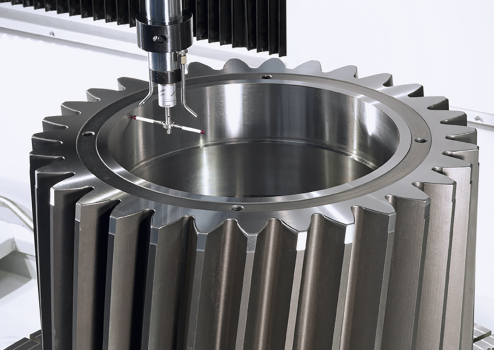How Much Do You Know About Gear Machining?
Introduction to Gears
In mechanical systems, gears transfer power and motion between two or more spinning shafts. They come in various sizes and forms, each created for a particular use. The main categories of gears consist of:
1. Spur Gears: The simplest and most prevalent gear, having straight teeth that run perpendicular to the gear’s axis. Spur gears are used when efficiency and noise are not crucial considerations.
2. Helical Gears: Compared to spur gears, helical gears operate more smoothly and quietly due to their inclined teeth. They are often used in fast-paced applications.
3. Bevel Gears: These gears transfer motion between shafts that cross at an angle and feature cone-shaped teeth. They are often found in the differential systems of cars.
4. Planetary Gears: Also called epicyclic gears, planetaries are used in automated transmissions and other systems where compactness and high torque transfer are crucial.
Gear Manufacturing Methods
Depending on the kind of gear and the particular needs, several manufacturing processes are used to create gears. The main procedures used in gear production include:
1. Hobbing: This technique makes spur, helical, and worm gears popular. It includes removing material and shaping the gear’s teeth with a cutting tool (hob). The machines used for hobbling are adaptable and suitable for large manufacturing.
2. Milling: Another technique for creating gear teeth is gear milling. Milling machines use a revolving cutter to remove material, and various gear types may be made using them.
3. Shaping: Shaping is a gear-cutting technique that produces gear teeth using a reciprocating tool. Smaller gears and internal gear production often employ it.
4. Grinding: To produce highly accurate gear teeth and enhance surface smoothness, gear grinding is a precise finishing technique. It may be used to make hardened gears with precise tolerances.
5. Broaching: Broaching is cutting the gear teeth by dragging a broach tool through the gear blank. It is perfect for making consistent-quality gears in significant volumes.
Materials Used in Gear Manufacturing
The durability and performance of gears are highly dependent on the material selection. Typical materials used in the production of gears include:
1. Steel: Due to their exceptional strength, hardness, and wear resistance, alloy steels are the most often used material for gears. For applications that are not as demanding, carbon steels are also employed.
2. Cast Iron: Due to its reputation for vibration dampening, cast iron gears are well suited for heavy equipment and gearboxes.
3. Brass and bronze: These materials, which have self-lubricating solid qualities, are employed in low-speed, low-load applications.
4. Plastic: Lightweight and non-metallic gear applications employ thermoplastic materials like nylon and polyacetal.
5. Composite Materials: In specific cutting-edge applications, composite materials combine many materials’ advantages, such as increased strength and weight reduction.

Gear Cutting Processes
The exact teeth and profiles required for dependable and effective gear operation are produced by gear-cutting operations, which are essential in this regard. The following are a few of the crucial procedures:
1. Shaping and Hobbing: Shaping and hobbing operations include the employment of cutting tools with a profile opposite to that of the gear teeth. The cutter removes material to form the teeth while the gear blank rotates or reciprocates.
2. Gear milling: A spinning cutting tool with the proper profile is used to mill the gear teeth. Depending on the kind of gear, the cutter may be positioned on a horizontal or vertical spindle.
3. Grinding: Abrasive wheels are used in the precise gear grinding process to produce very accurate gear tooth profiles and surface finishes. It is often used for exact gears.
4. Broaching: This technique may create internal gears or gears with complicated forms. It has a set of cutting teeth that progressively become bigger and deeper.
Quality Control in Gear Machining
It’s essential to ensure the quality of machined gears to avoid early wear, noise, and efficiency loss. Among the quality assurance measures are:
1. Gear Inspection: Various devices and methods, including gear testers, coordinate measuring machines (CMMs), and optical or laser-based inspection systems, are used to examine gears. These techniques examine the gear’s surface quality, tooth profiles, and size.
2. Material Analysis: Materials used to make gears are tested for composition and quality to ensure they adhere to requirements.
3. Heat Treatment: Heat treatment procedures like carburizing and quenching are performed to harden gear materials and increase their wear resistance.
4. Tooth Profile Analysis: The correctness and compliance of gear tooth profiles to design criteria are checked. Any variances might lead to problematic gear meshing and functionality.
5. Surface polish: The gear teeth’s surface polish is crucial in lowering noise and friction. Surface finish quality is evaluated using the metrics Ra (average roughness) and Rz (average peak-to-valley).
Challenges in Gear Machining
Gear machining presents several difficulties. Typical difficulties encountered in the manufacture of gears include:
1. Dimensional Accuracy: Having exact gear dimensions and tooth profiles is crucial. Any variations might cause issues with gear meshing and lower efficiency.
2. Surface Finish: A subpar surface finish during gear operation may increase friction, wear, and noise.
3. Heat Treatment Quality: Variations in hardness caused by inconsistent heat treatment might reduce the strength and durability of gears.
4. Material Choice: Choosing the appropriate material for a particular application is essential. The improper material selection might result in an early failure.
5. Tool Wear: Gear machining cutting tools deteriorate with time, lowering the quality of gear manufacture. It’s vital to replace and maintain tools regularly.
Conclusion
The production of gears for diverse uses falls within the purview of gear machining, an essential facet of the manufacturing process. When it comes to assuring the dependability and performance of gears, many factors, including the choice of gear type, manufacturing technique, materials, and quality control systems, all play a crucial influence. Gear makers must continually develop and improve their machining methods to produce effective, long-lasting, and quiet gears while in use. This is necessary for them to fulfil the expectations of various industries.
